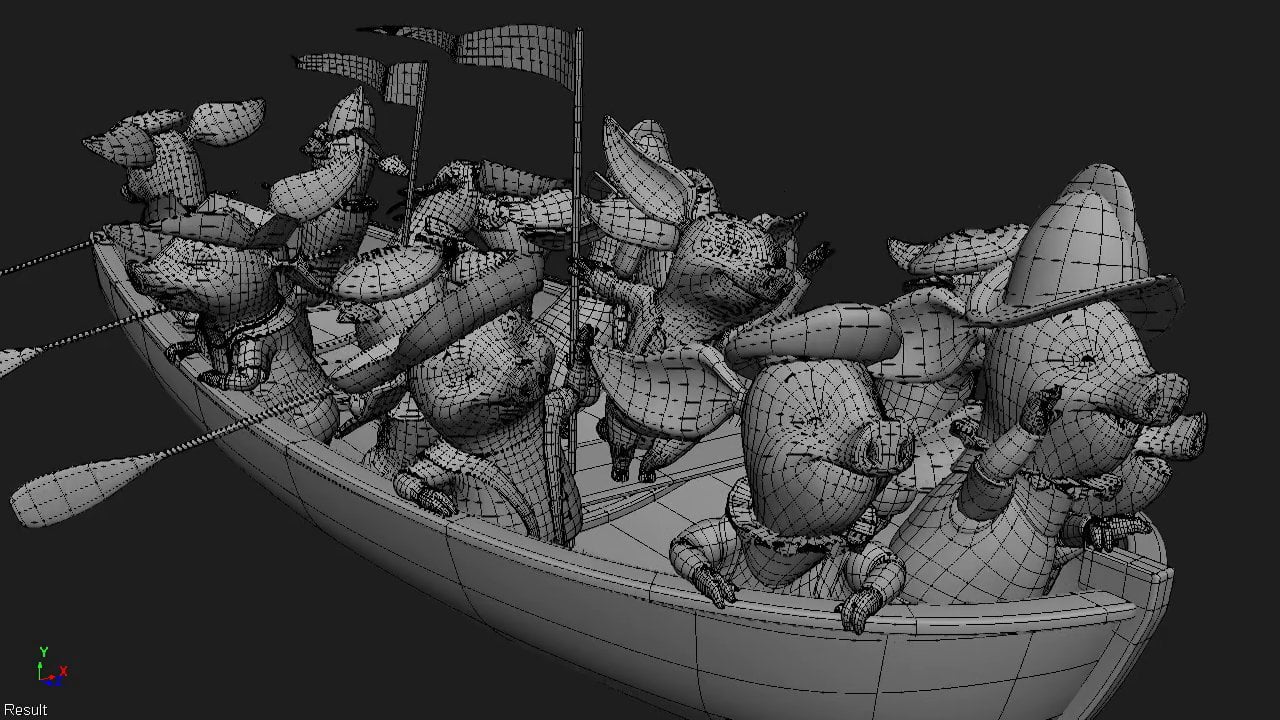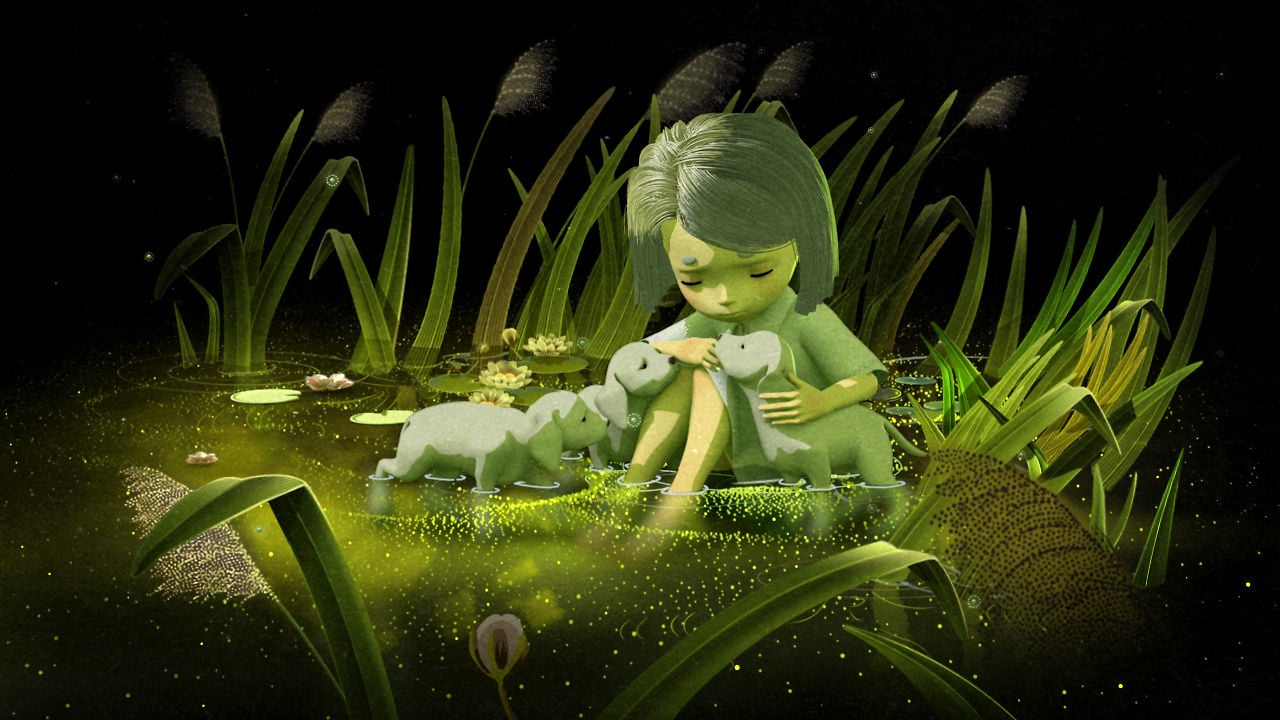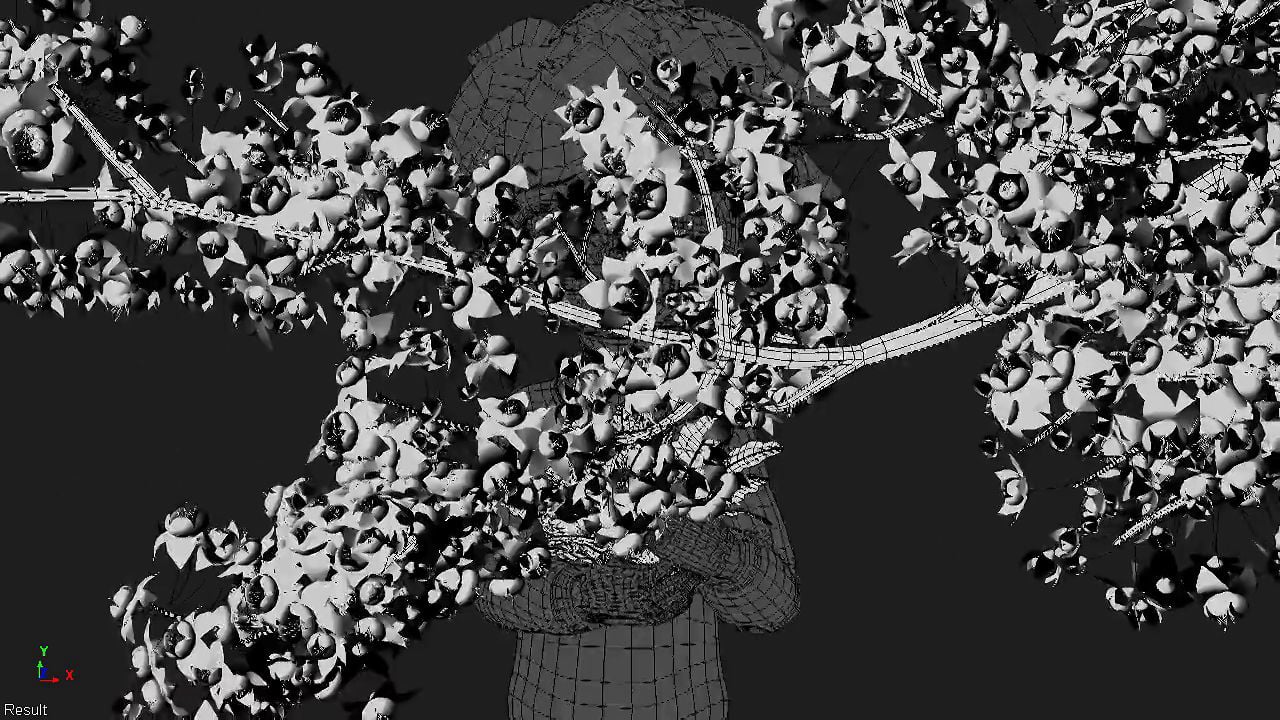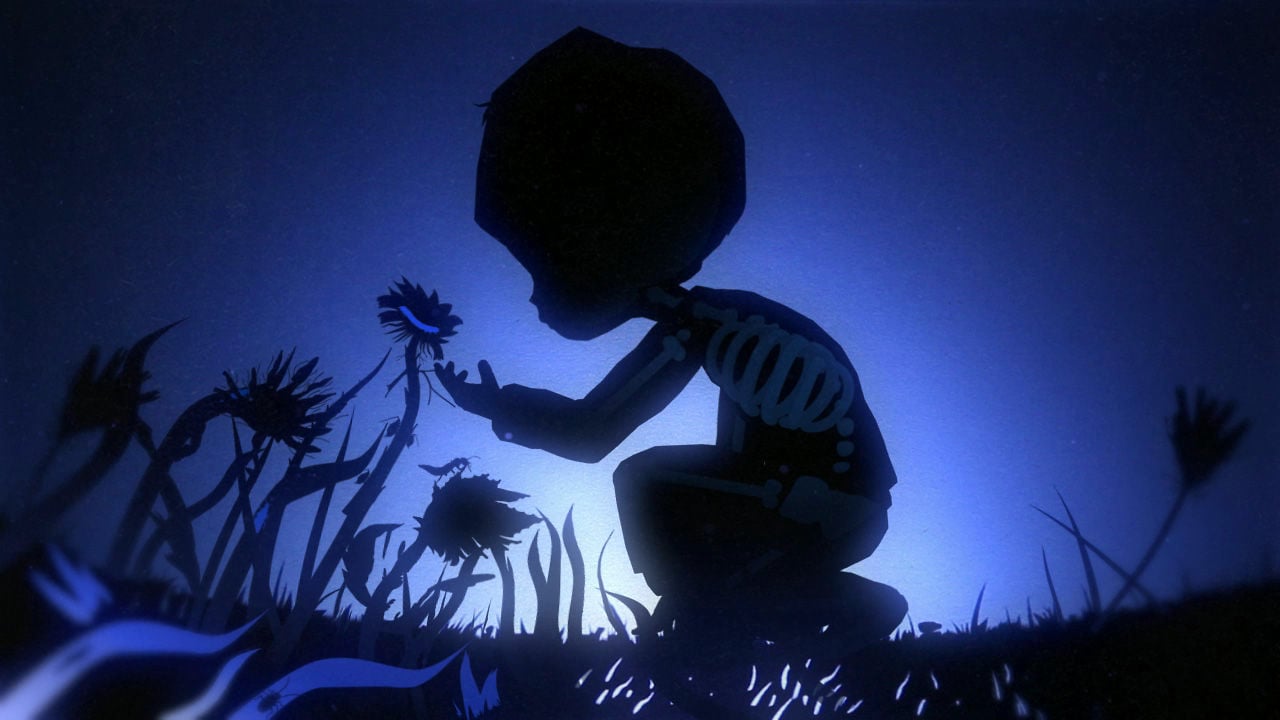This story takes place in Lisbon, Portugal – your country of origin. Would you say that this story is part-autobiographical?
Yes, indeed. Nothing Else But Water addresses a theme related to the history of Portugal. Being French of Portuguese heritage, it was very close to my heart to direct a movie set in my parents’ country. This film also evokes a painful story I lived, a story I wanted to express in a very Portuguese way called the Saudade.
Saudade describes a deep emotional state of nostalgia with a profound melancholy. It is the feeling of something or someone that we have loved in the past that has been lost. The short film approaches the difficulty that we can experience in difficult times that seems insurmountable. It is a dreamlike journey told through the varying lights from dawn to dusk.
The use of broken perspective in the Escher style is particularly rare and well done for a 3D animation short. What was behind your decision to experiment with this kind of background?
I always love playing with perspectives. My goal is not to copy reality, on the contrary, I try to get away from the real as much as possible. In this case, it allowed me to amplify the sensation of the background and to give it a real presence. My intention was for the architectural straight lines to contrast with the young pig’s roundness and to accentuate his uneasiness.
Lisbon has a chaotic architecture and in this film it’s the way I remember it, sometimes very confusing and poorly organised. This town is about to fall and confirms my idea of Saudade, this is a memory of Portugal’s golden age now bygone.
But my priority was to express the vertigo of isolation. To do this, everything is set up to exclude the little pig from the background and amplify the feeling of his growing sadness.
The sets were designed in the same logic as 15th century navigating maps. These speculative maps represented the world in a human scale and featured little-explored territories. Waves, sailing ships and characters are visible and out of scale. The Earth is also very illustrative with inhabitants on the other side of the world featured upside down and territories separated by big rivers and the sun revolves around the Earth (as shown in the film).
What is the meaning of the dead goose on the back of the main character?
Here, the goose, a symbol of freedom and innocence, is dead. Carried on his back, she also evokes the burden of waiting and death, the burden that we can’t be separated from and that we must inevitably have on our own shoulders. This dead weight is like a relic of his past.
This short was produced in only three months, after a month of research and pre-production. What were the reasons for such a rapid production time?
It was mainly economic reasons. I devised a flexible and responsive work method with my team of between three and five people that allowed us to get rid of some of the usual production steps. I like this light and short process, it required a great personal commitment and concentration, but I’m happy with the final result. For my part, I find it frustrating to spend one or two years for a result that can be obtained in a few months. With this method I can make more projects, be more productive.
Most of your work – such as Autumn Leaves or Do I Have Power – has a strong presence of music and no dialogue, and a similar structure to a music video. Where do you feel this style evolved from?
That comes from a childhood memory. My brothers and I used to watch Japanese movies without dubbing and subtitles. Without having entirely understood the films, we always felt strange feelings and incredible sensations at the end, our own interpretations. When I watch those films again today, with dubbing or subtitles, the result doesn’t match what I had imagined earlier, and gives me a feeling of deception. The age of reason probably contributes to this gap but it seems to me that the power of imagination expands our mind further than a didactic story.
Regarding the music, it is easier to structure pictures to musical tempos. Music brings us into introspection (the beat of the heart).
How did your collaboration with the composer Jean Philippe Goude come about?
To work with Jean Philippe Goude’s music was like a dream for me. I am a big admirer of his work. I proposed a collaboration with him and sent him a first edit of the film set to a piece of his that he composed in 1994 and, much to my surprise, he accepted the same day. I feel very honored and lucky to have had this opportunity.
You became the new artistic director at Supinfocom Valenciennes animation school at the beginning of this year. What was the reason behind this new adventure?
I graduated from this school and I have a huge respect for what Supinfocom represents in the animation world. It was a pioneer school in CGI and it’s always maintained an excellent standard of student work. It’s also been a good opportunity for me to discover the joy of sharing knowledge and creativity through teaching.
Do you have a new short film project or even a feature coming up?
Yes I have a lot of projects in mind, usually based on a visual idea I want to experiment with. Actually making commissioned films takes up most of my time, but I hope to manage my agenda to actualize those ideas!
I would love the challenge of a long feature project. I’m trying step by step to understand the complex mechanisms of features but, yes, they are definitely my long-term priority goal.















